Intro
Learn about the 4 rotator cuff muscles: supraspinatus, infraspinatus, teres minor, and subscapularis, and their role in shoulder stability, mobility, and injury prevention, including rotator cuff tears and strains.
The rotator cuff is a group of muscles and tendons that surround the shoulder joint, keeping the head of the humerus (upper arm bone) firmly within the shallow socket of the shoulder. The rotator cuff muscles play a crucial role in shoulder movement, stability, and overall function. Understanding the anatomy and function of these muscles is essential for maintaining healthy shoulders and preventing injuries. In this article, we will delve into the world of rotator cuff muscles, exploring their importance, functions, and ways to maintain their health.
The rotator cuff muscles are responsible for a wide range of movements, including rotation, abduction, and adduction of the shoulder joint. They work together to provide stability and control, allowing us to perform daily activities with ease. The four rotator cuff muscles are the supraspinatus, infraspinatus, teres minor, and subscapularis. Each muscle has a unique function and contribution to the overall health of the shoulder.
As we go about our daily lives, our shoulders are constantly in motion, and the rotator cuff muscles are working tirelessly to maintain stability and control. Whether we are lifting heavy objects, throwing a ball, or simply reaching for something, our rotator cuff muscles are engaged. However, this constant use can lead to wear and tear, making the rotator cuff muscles prone to injuries and strains. In fact, rotator cuff injuries are among the most common shoulder problems, affecting millions of people worldwide.
Rotator Cuff Muscles Overview
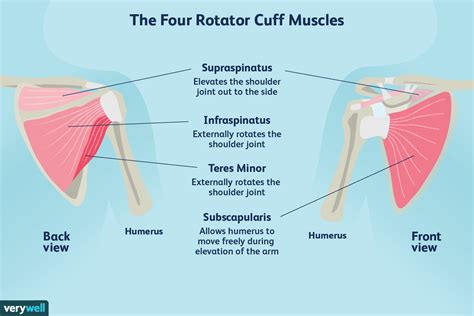
Supraspinatus Muscle
The supraspinatus muscle is the most superior of the rotator cuff muscles, located at the top of the shoulder joint. It is responsible for abduction, or lifting the arm away from the body. The supraspinatus muscle is also involved in stabilizing the shoulder joint, keeping the head of the humerus firmly within the socket.Functions of Rotator Cuff Muscles
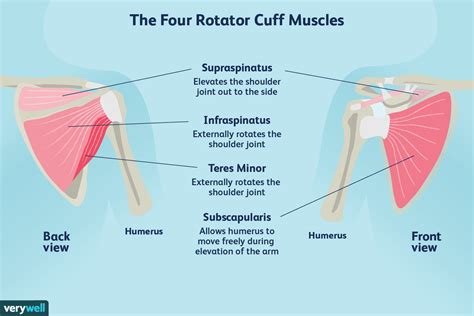
Infraspinatus and Teres Minor Muscles
The infraspinatus and teres minor muscles are located on the posterior aspect of the shoulder joint. They work together to rotate the arm outward, providing stability and control to the shoulder joint. The infraspinatus muscle is also involved in adduction, or bringing the arm back towards the body.Importance of Rotator Cuff Muscles
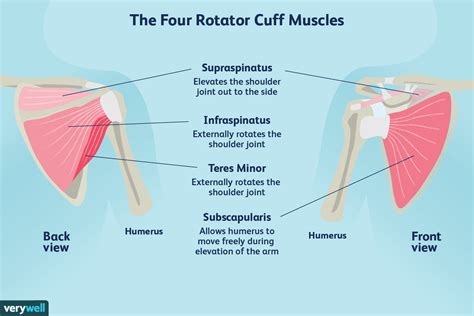
Subscapularis Muscle
The subscapularis muscle is located on the anterior aspect of the shoulder joint. It is responsible for rotating the arm inward, providing stability and control to the shoulder joint. The subscapularis muscle is also involved in adduction, or bringing the arm back towards the body.Common Injuries and Conditions
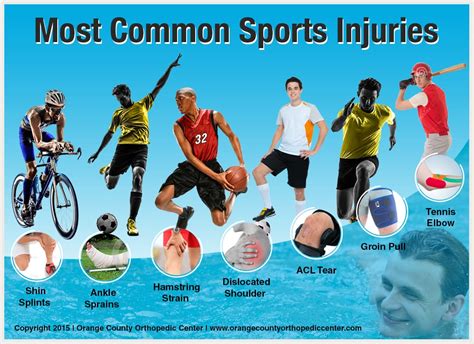
Prevention and Treatment
Preventing rotator cuff injuries and conditions requires a combination of stretching, strengthening, and proper posture. Strengthening the rotator cuff muscles through exercises like shoulder rotations and arm raises can help prevent injuries. Stretching the shoulders and maintaining proper posture can also help reduce the risk of injury.Exercises for Rotator Cuff Muscles
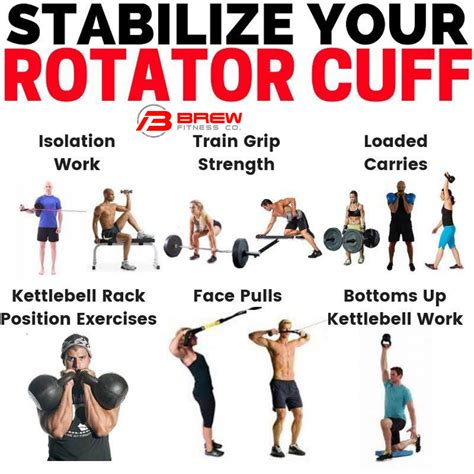
Rehabilitation and Recovery
Rehabilitating and recovering from rotator cuff injuries and conditions requires a combination of rest, ice, compression, and elevation (RICE), as well as physical therapy and exercises. A physical therapist can help develop a rehabilitation program tailored to the individual's needs and goals.Conclusion and Final Thoughts

We invite you to share your thoughts and experiences with rotator cuff muscles in the comments below. Have you ever experienced a rotator cuff injury or condition? What exercises and stretches have you found helpful in preventing or treating these conditions? Share your stories and tips with us, and let's work together to maintain healthy, functioning shoulders.
What are the four rotator cuff muscles?
+The four rotator cuff muscles are the supraspinatus, infraspinatus, teres minor, and subscapularis.
What is the function of the supraspinatus muscle?
+The supraspinatus muscle is responsible for abduction, or lifting the arm away from the body.
How can I prevent rotator cuff injuries and conditions?
+Preventing rotator cuff injuries and conditions requires a combination of stretching, strengthening, and proper posture. Strengthening the rotator cuff muscles through exercises like shoulder rotations and arm raises can help prevent injuries.
